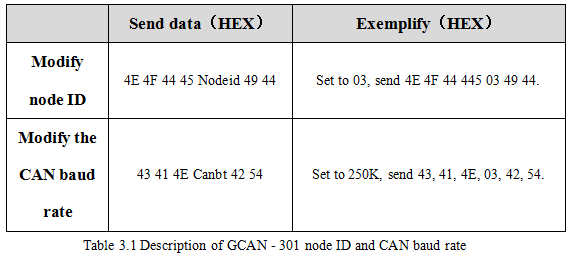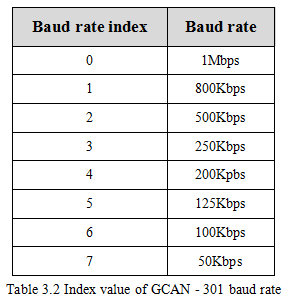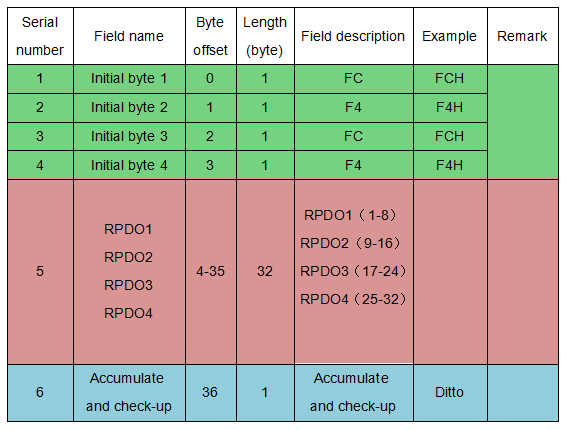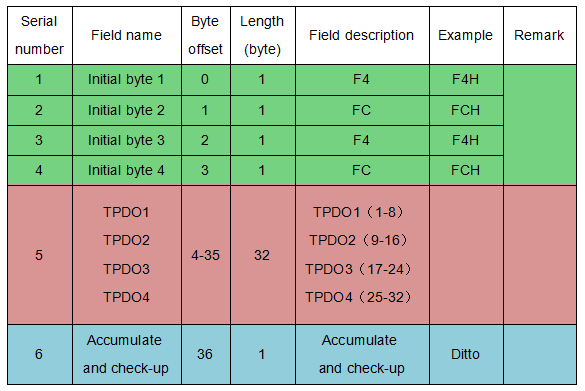Node ID and CAN-Bus baud rate setting
3. Node ID and CAN-Bus baud rate setting
GCAN - 301 can use "serial debugging assistant" to change the CAN bus node ID and baud rate. The instructions are shown in table 3.1, the baud rate index is shown in table 3.2.
After entering the "serial debugging assistant", Serial port rate is set to 9600bps, parity bit is none, the data bit is 8, stop bit is 1. Please select hexadecimal when sending and receiving display.
If you change the node ID or CAN baud rate, GCAN-301 will automatically return the data you sent, otherwise it is failure. After the setting is successful, users need to power-on again.


4. Custom protocol
4.1 CANopen slave station to RS485(RPDO)

4.2 RS485 to CANopen slave station (TPDO)

Note:The agreement can be customized according to your requirements
4.3 Check digit calculation method
The checksum = data1 data2 + +...+ data32, if the checksum is greater than 255, the result is a low 8 bite.
GCAN - 301 can use "serial debugging assistant" to change the CAN bus node ID and baud rate. The instructions are shown in table 3.1, the baud rate index is shown in table 3.2.
After entering the "serial debugging assistant", Serial port rate is set to 9600bps, parity bit is none, the data bit is 8, stop bit is 1. Please select hexadecimal when sending and receiving display.
If you change the node ID or CAN baud rate, GCAN-301 will automatically return the data you sent, otherwise it is failure. After the setting is successful, users need to power-on again.


4. Custom protocol
4.1 CANopen slave station to RS485(RPDO)

4.2 RS485 to CANopen slave station (TPDO)

Note:The agreement can be customized according to your requirements
4.3 Check digit calculation method
The checksum = data1 data2 + +...+ data32, if the checksum is greater than 255, the result is a low 8 bite.


